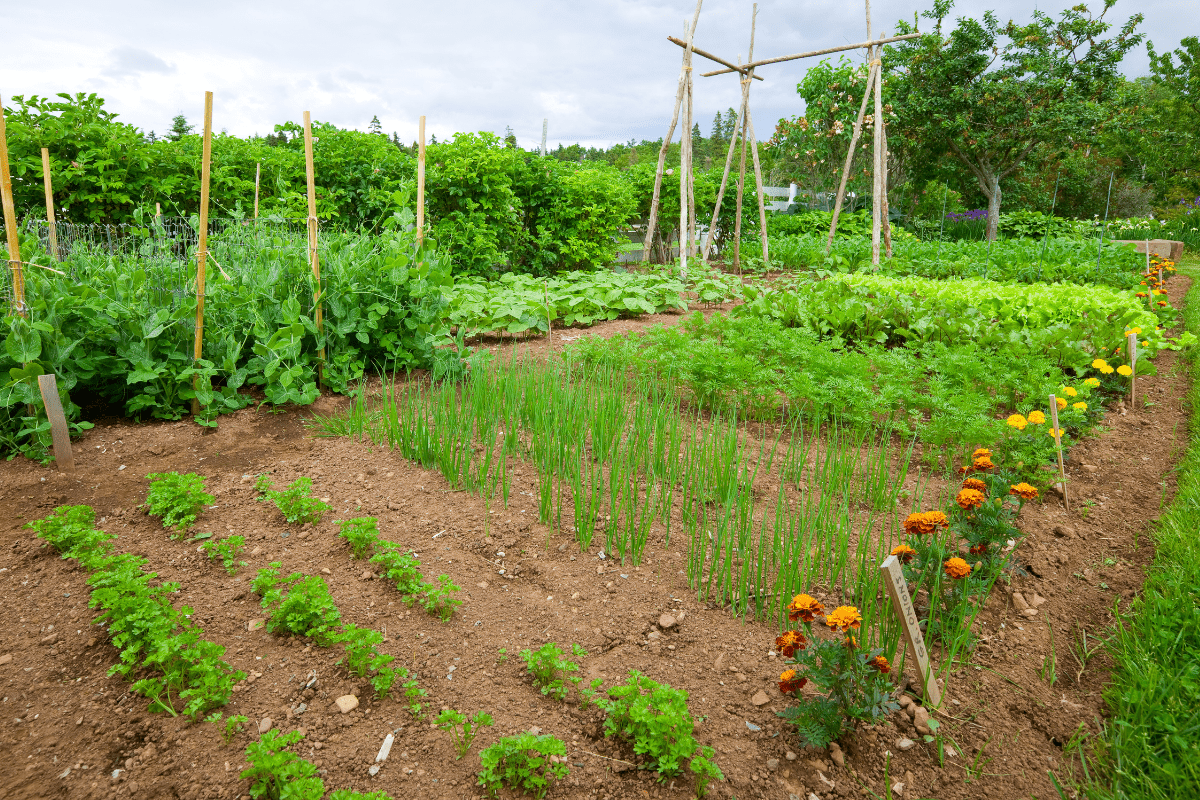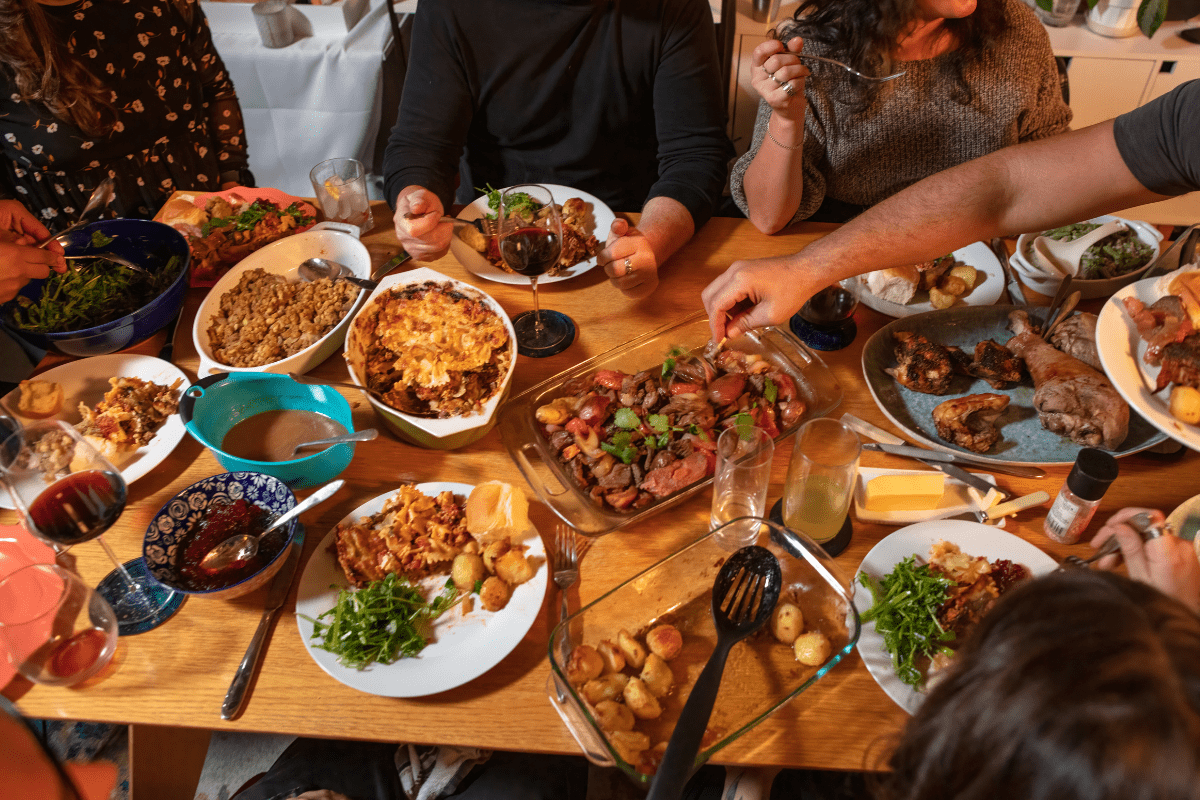If you've ever planted tomatoes in April only to watch them freeze, or wondered why your neighbor's okra looks amazing while yours struggles, welcome to gardening in Oklahoma. Our state's personality swings between generous and vindictive, often within the same week. But once you learn to work with Oklahoma's quirks instead of fighting them, you'll discover a surprisingly productive growing season that stretches nearly year-round.
Understanding Oklahoma's Multiple Personalities
Oklahoma doesn't just have weather… it has WEATHER. The state spans USDA hardiness zones 6a through 8a, which sounds technical until you realize it means your cousin in the panhandle deals with -10°F winters while you're barely seeing frost in Ardmore.
This 30-degree temperature spread creates wildly different growing seasons across the state. Boise City gardeners squeeze their efforts into 181 frost-free days, while lucky folks in southeastern Oklahoma enjoy 255 days of growing weather. That's over two extra months of tomatoes, assuming the drought, wind, or surprise hail doesn't get them first.
The dirt on Oklahoma dirt
Let's talk soil, because ours has issues. Eastern Oklahoma gardeners battle heavy clay that turns into concrete when dry and swamp when wet. Western gardeners deal with sandy soil that won't hold water or nutrients without serious intervention. Statewide testing shows a median pH of 6.3, but here's the kicker… 35% of tested fields show critically low pH below 5.5.
This increasing acidity problem affects even traditionally alkaline western soils. Your grandfather might have grown perfect tomatoes without trying, but that same spot might need lime applications today. Get your soil tested. Seriously. It's free through your county extension office and saves countless headaches.
Your Month-by-Month Oklahoma Planting Playbook
Success in Oklahoma gardening comes down to timing, and our timing windows can be frustratingly narrow. Miss the spring planting window by two weeks and you're battling 95-degree heat before your plants establish. Plant fall crops too late and the first freeze catches them unprepared.
Spring planting: The race against heat
Early spring (February 15 to March 10) belongs to cool-season vegetables. Once soil temperatures hit 40°F, plant lettuce, peas, potatoes, onions, and brassicas. The Oklahoma Garden Planning Guide recommends these early plantings because they'll mature before summer heat arrives.
Mid-spring timing gets tricky. You need soil temperatures above 50°F for warm-season crops, but frost risk lingers through mid-April in central Oklahoma. Most gardeners transplant tomatoes, peppers, and eggplants around April 15, crossing their fingers against late freezes. Keep old sheets or row covers handy… you'll probably need them at least once.
By May, it's a free-for-all of direct seeding:
- Beans and corn
- Squash and cucumbers
- Okra and melons
- Annual flowers everywhere
Pro tip: Plant okra when soil temperature consistently hits 65°F. Earlier plantings just sit there looking pathetic until the soil warms up anyway.
Summer planting: Yes, really
Most gardeners give up during Oklahoma summers, which is exactly wrong. July 15 marks the beginning of fall garden season. Transplant tomatoes, peppers, and eggplant for autumn harvest. Direct seed bush beans and cucumbers through August 20. Plant sweet corn by July 15 for fresh ears in October.
This fall gardening window often produces better results than spring. Pest populations decline, rainfall becomes more reliable, and plants mature during ideal temperatures instead of brutal heat.
Fall and winter: The secret season
September brings cool-season crops back into play. Direct seed lettuce, spinach, radishes, and Asian greens. Many Oklahoma gardeners report their best lettuce comes from September plantings that avoid spring's bolt-inducing heat.
October means garlic planting time. Separate cloves and plant 2 inches deep, 4 inches apart. They'll develop roots through winter and emerge in spring for early summer harvest. Also plant multiplying onions and cover crops like crimson clover.
Don't pack away the garden in November. With simple protection like row covers or cold frames, you can harvest fresh greens through winter. Spinach, kale, and collards actually taste better after frost sweetens them.
Varieties That Actually Work Here
Choosing the right varieties makes the difference between Instagram-worthy harvests and composting failures. After decades of trials, Oklahoma State University knows what works.
Tomatoes that laugh at our weather
Skip the heirloom beauties that need perfect conditions. You want:
- Celebrity VFN1,2 for disease resistance
- Mountain Pride VF1 for reliability
- Phoenix for heat tolerance
- Better Boy VNF for production
These varieties resist verticillium wilt, fusarium, and nematodes… the unholy trinity of Oklahoma tomato problems. They're not fancy, but they actually produce fruit instead of just looking pretty while dying.
Other vegetable MVPs
For peppers, Keystone Resistant Giant #3 fights bacterial spot while TAM Vera Cruz handles extreme heat. Our state vegetable, okra, performs best with Clemson Spineless variety. Early Summer Crookneck squash produces before squash bugs take over.
The flower garden needs tough customers too:
- Zinnias bloom continuously
- Periwinkle ignores drought
- Marigolds deter pests
- Native gaillardia never quits
Skip the fussy English garden flowers. They'll break your heart by June.
Finding Local Seasonal Goodness
Growing your own food rocks, but sometimes you want professional results or crops you can't grow yourself. Oklahoma's local food scene has exploded beyond the stereotypical farmer selling from a truck bed.
Farmers markets: Community and cucumbers
The Norman Farm Market operates year-round as Oklahoma's longest-running market. Summer Saturdays feature 50+ vendors hawking everything from Armenian cucumbers to zebra tomatoes. Winter markets maintain 15-20 dedicated vendors with storage crops, greenhouse greens, and enough baked goods to ruin any diet.
Tulsa Farmers Market draws thousands to its permanent pavilion. Beyond vegetables, you'll find local honey, grass-fed beef, artisan breads, and that one vendor who always has microgreens no matter the season.
Smaller markets pop up statewide, many participating in Double Up Oklahoma programs that double SNAP benefits for fresh produce. Check the website for locations near you.
CSA shares: Vegetable surprises weekly
Community Supported Agriculture programs deliver weekly boxes of seasonal produce. Guilford Gardens in northwest Oklahoma City includes purple kohlrabi and watermelon radishes… vegetables you'd never buy but might actually love. Find CSA options near you and prepare for culinary adventures.
U-Pick operations: Family fun with fruit
Livesay Orchards in Porter (Oklahoma's Official Peach Capital) offers 12 peach varieties from mid-June through August. Kids love the hayrides while adults focus on filling buckets with tree-ripened fruit that makes grocery store peaches taste like cardboard.
Berry farms like N40 Berries in Stillwater grow thornless blackberries, eliminating the blood sacrifice usually required for berry picking. Find a comprehensive list of u-pick farms and plan your summer adventures.
Making Seasonal Abundance Last
That moment when twenty tomato plants all ripen simultaneously? Or when the farmers market has peaches for $10 a box? Time to preserve that bounty for winter eating.
Storage without processing
Simple storage extends many crops' useful life:
- Root vegetables last 3-5 weeks in perforated plastic bags in the fridge
- Winter squash keeps for months at 50-55°F
- Potatoes prefer cool, dark spaces away from onions
- Never refrigerate vine-ripened tomatoes unless you enjoy disappointment
Preservation techniques that work
OSU Extension workshops teach safe canning methods. Water bath canning works for high-acid foods like tomatoes and peaches. Low-acid vegetables need pressure canning for safety. Extension offices test pressure canner gauges free… because botulism isn't worth risking.
Freezing works great for many crops. Blanch green beans, corn, and okra before freezing. Tomatoes can be frozen whole, skin and all, then used in winter soups and sauces.
Traditional Oklahoma preparations
Our state vegetable shines as fried okra from July through September. Cut rounds, dredge in seasoned cornmeal, and fry until crispy. Even okra haters often convert after trying properly fried okra.
Summer squash becomes the base for countless casseroles combining yellow squash, onions, and enough cheese to make anything taste good. Fresh corn gets grilled, creamed, or combined with lima beans and tomatoes for succotash.
Strategies for Oklahoma Gardening Success
After fighting Oklahoma weather for years, smart gardeners develop systems that work with nature instead of against it.
Water wisely or pay the price
Drought will find you eventually. Prepare with drip irrigation that delivers water directly to roots while reducing disease. Add 2-3 inches of mulch around plants to cut watering frequency by half. Native and adapted plants like purple coneflower survive on rainfall alone once established.
During restrictions, prioritize water for producing plants and new transplants. Established perennials can handle stress better than you think. Let the lawn go dormant… it'll come back.
Build better soil gradually
Annual compost additions transform both clay and sandy soils. That seems impossible until you understand that organic matter improves soil structure, creating aggregates that hold moisture while allowing drainage. Cover crops like crimson clover add nitrogen while preventing erosion.
Don't expect overnight miracles. Soil improvement takes years, but each season gets easier. Test soil every few years to track progress and adjust amendments.
Extend seasons with simple tools
Cold frames built from scrap lumber and old windows create microclimates perfect for winter greens. Floating row covers provide 4-8 degrees of frost protection while letting rain through. These low-tech solutions add weeks to both ends of the growing season.
High tunnels and unheated greenhouses take season extension seriously. Local growers report harvesting tomatoes into December using only passive solar heat. The investment pays off through premium winter produce prices.
Working With Oklahoma's Challenges
Every Oklahoma gardener faces the same battles. Late spring freezes, summer heat stress, clay soil, and drought cycles test our patience annually. Regional variations add complexity… panhandle gardeners need quick-maturing varieties while eastern gardeners battle fungal diseases.
The secret? Embrace the chaos. Plant extra for the weather to claim its share. Celebrate successes and laugh at failures. That perfect tomato in August tastes better because you earned it through Oklahoma's trials.
Connect with other local gardeners through extension programs, garden clubs, and online forums. We're all fighting the same weather, and shared knowledge helps everyone succeed. Plus, zucchini season means someone always needs help eating the surplus.
Oklahoma gardening isn't easy, but it's never boring. Each season brings new challenges and opportunities to refine techniques. Start small, learn continuously, and gradually expand what you grow and preserve. Before long, you'll be that neighbor with the amazing okra, sharing your secrets with the next confused gardener wondering why their plants look pathetic.
The state's generous growing season rewards those who learn its rhythms. From March's first lettuce through December's final kale harvest, Oklahoma offers nearly year-round production potential. You just have to know when to plant what, where to find it when you can't grow it yourself, and how to preserve the abundance when everything ripens at once.
Now get out there and get dirty. Your soil needs you, and honestly, you probably need it too.





